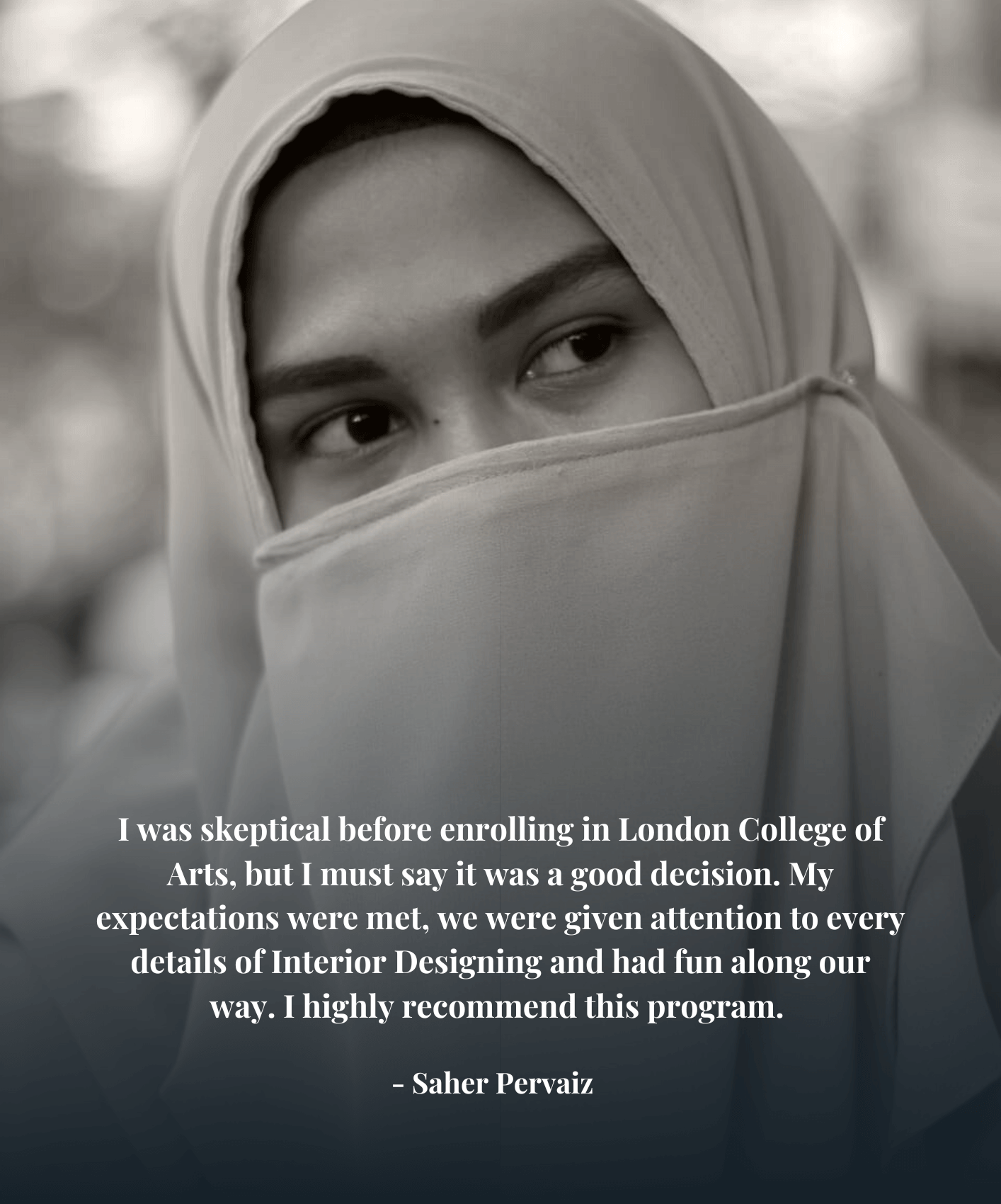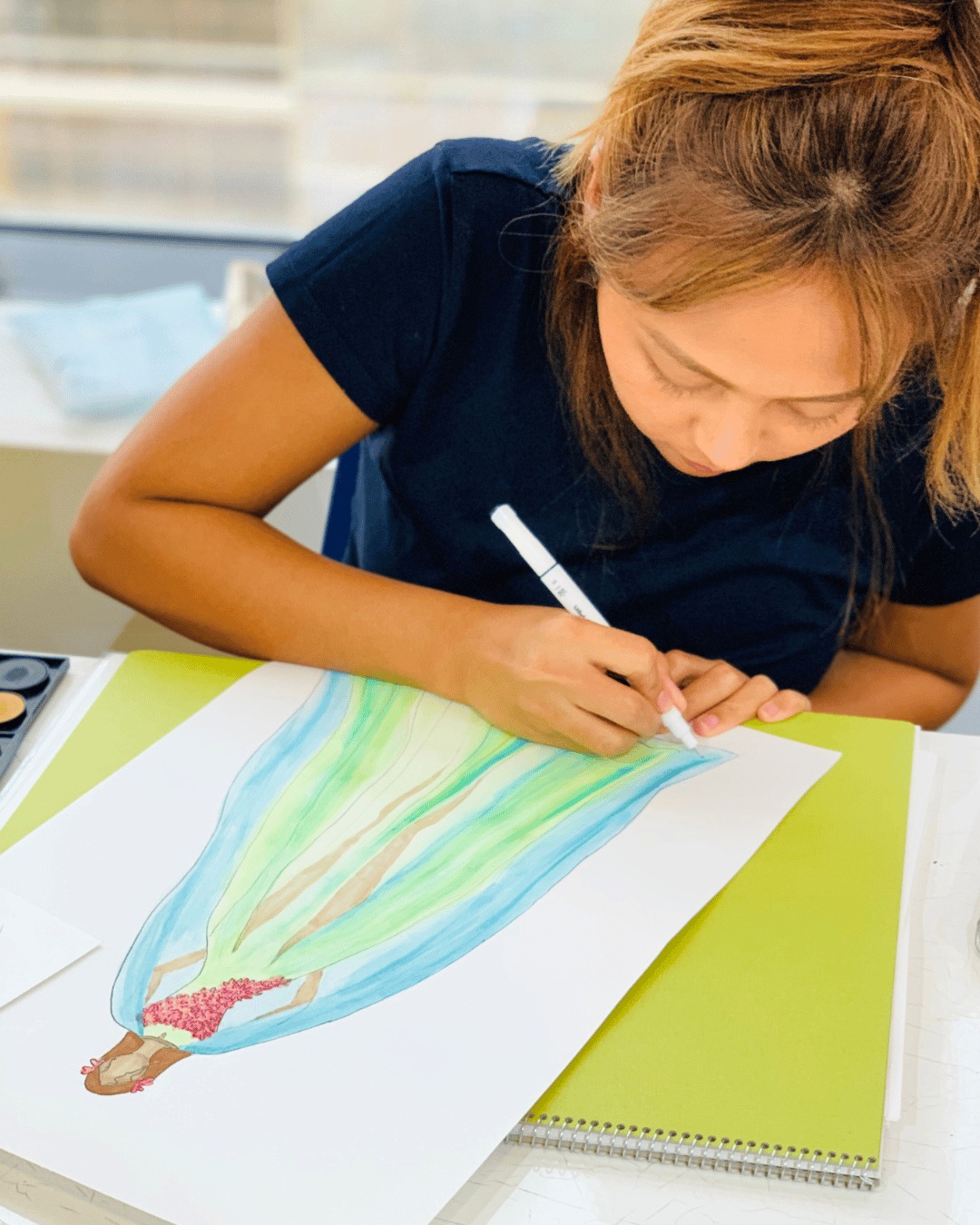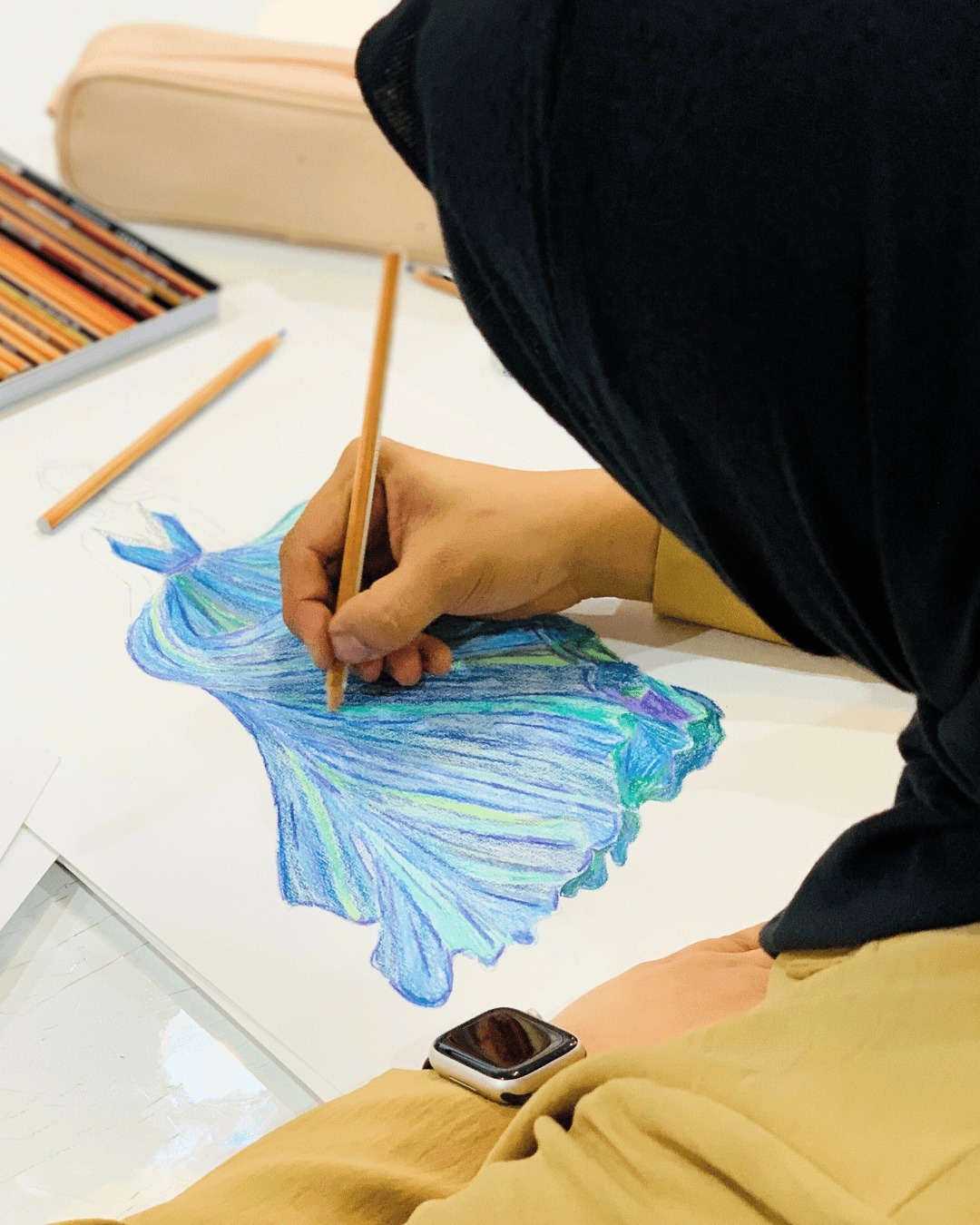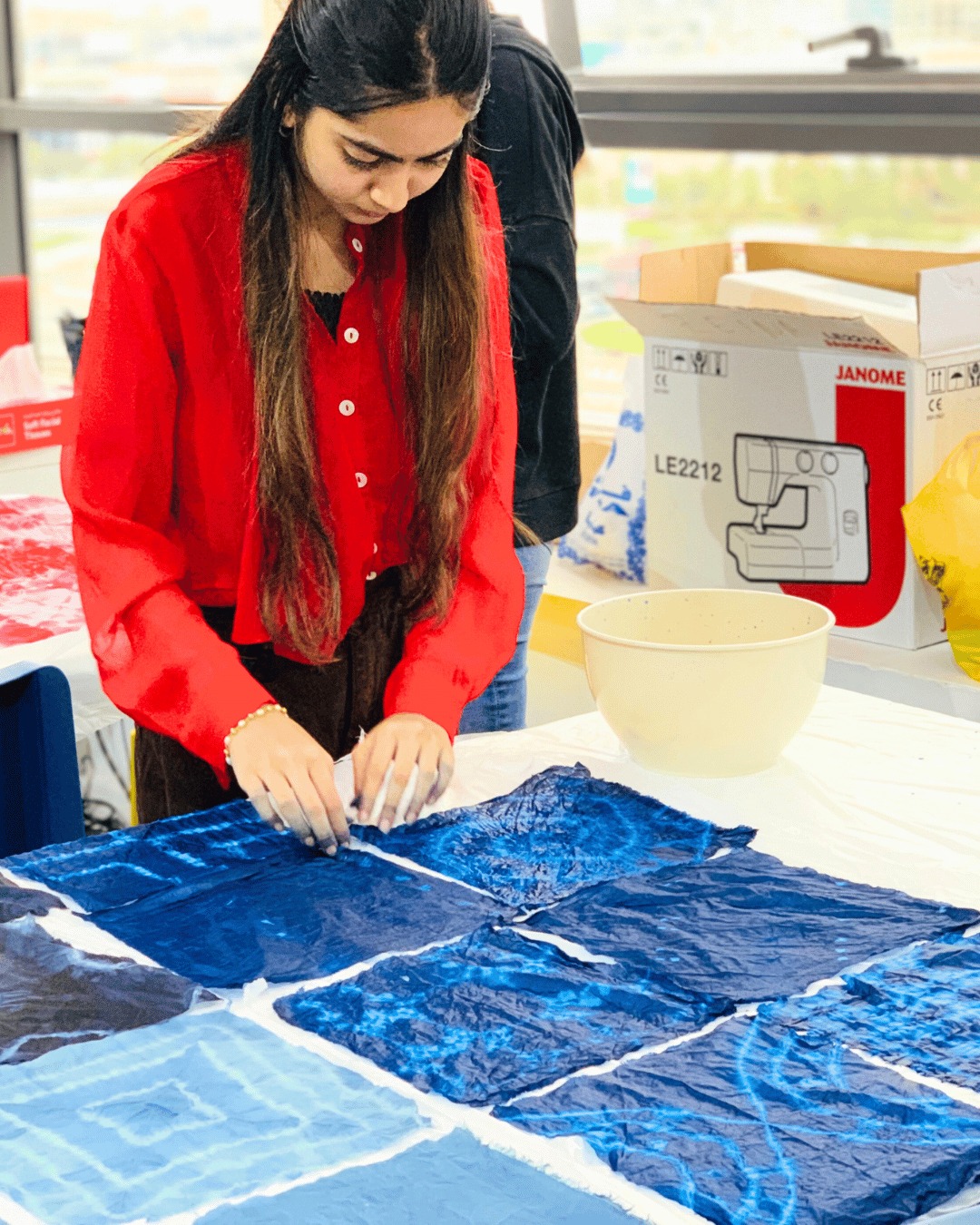
Introduction to the program
The Professional Diploma in Interior Design is specifically designed to meet the requirements of this challenging and expanding field. The course aims to prepare students for their first significant appointment, be it vocational or academic providing them with a clear understanding of three dimensional design analysis, both in terms of space and objects. The course concentrates on the design element, encouraging students to develop a thorough and imaginative approach.
The idea of “lateral design” is developed in which briefs are tackled at a variety of levels and with an experimental approach to problem solving. Through set design projects and lectures students are introduced to the basic principles of Interior Design including: drawing, presentation, surveying, materials, construction, specifying, and context, history of design, visual research and computer aided design.
Membership: Students can now apply for Student Memberships the British Institute of Interior Design, UK at no cost.
Course Objectives:
- To develop talent among students in the area of designing arts
- To prepare the students for an entry level position into the interiors industry
- To facilitate use of technology in designing expression
- To provide a career programme encouraging self-employment
Teaching Methodology: Emphasis is placed on hands on training and practice. The sessions are 70% hands on practical assessments and 30% spread on lectures and research practice.
Entry Requirements
Admission into the Design program is open to students of all nationalities with respect to the submission of the following requirements:
- Copy of the high school graduation certificate or equivalent from a recognized institution. These may include one of the following:
1. High School Certificate
2. O’ levels (IGCSE/GCE)
3. GED (General Education Diploma) - Complete Application form with 3 color passport – photographs
- Clear passport copy or other photo identity copy
- Students must have a good command of spoken English and own a laptop
Mature students: Students above the age of 21 may enter directly into the program.

Syllabus Outline
The students will be encouraged to develop visual thinking and creativity for design work. This unit will enable learners to experiment with drawing approaches and techniques in order to broaden their experience and understanding of visual language. Learners will need to use materials and media which are specific to drawing and 3D design, as well as unusual materials and media which may extend visual language and creativity.
To achieve this module the student must:
1 Comprehend the specific nature and qualities of drawing media and materials
2 Demonstrate creative use of drawing techniques and processes
3 Develop and extend understanding of visual language
4 Evaluate work for further development
The students are introduced to the cultural history which informs current thought and debate in 3D design. Emphasis is on research and study skills and learners acquiring source material and
knowledge. Presentation skills will also be applied in a practical context.
To achieve this module the student must:
1 Undertake in-depth research using electronic sources and paper-based materials
2 Demonstrate an understanding of creative influences through the effective interpretation and
analysis of information
3 Assess, interpret and evaluate information effectively and develop a personal view
4 Present conclusions effectively
The students will gain a knowledge and understanding of the visual and functional qualities of furniture and how it is designed. They will develop an understanding of a range of materials and select appropriate manufacturing processes in exploring construction and fabrication used in furniture design.
They will develop high-level competence in controlling the creative process from inception to realization. Learners will be expected to develop an understanding of the role and responsibilities of the designer/maker in a commercial context, including one-off, batch and mass production, and to develop the ability to communicate 3D ideas through 2D drawing techniques and 3D making, modelling and prototyping skills.
To achieve this module the student must:
1 Research and demonstrate a thorough knowledge of the visual, tactile and functional characteristics of furniture and related products
2 Research and develop an understanding of structures, materials and making processes to meet
design requirements
3 Demonstrate effective skills in design development, using appropriate techniques to communicate ideas and respond to identified needs
4 Demonstrate a thorough knowledge of professional practice, including contractual and health and safety issues
The students will learn to develop skills in communicating design intentions in 2D and 3D. The unit encourages learners to apply and refine visual presentation skills and develop their own distinctive approach to the presentation of design work.
To achieve this module the student must:
1 Research and evaluate a range of presentation types
2 Use an appropriate strategy to present design work effectively
3 Use materials, media and techniques to present design work effectively
4 Evaluate the effect of the presentation and identify areas for improvement.
The students will acquire the skills and understanding needed to create and modify interior environments for specific purposes. They will develop spatial awareness and competence in working with 3-D formal elements. Learners will also develop an understanding of the roles and responsibilities of the professional interior designer, including working within teams of other professionals. They will develop the ability to communicate 3D ideas through a range of visual presentation techniques.
To achieve this module the student must:
1 Demonstrate the ability to create and modify interior environments to meet design requirements
2 Demonstrate an understanding of the technical processes involved in responding to an interior design brief
3 Show an ability to analyse, clarify and respond to the aesthetic and functional requirements of design briefs and architects’ specifications
4 Work within a team of professional practitioners to develop an understanding of professional practice.
Computer Aided Design (CAD) is now being used in many architects’ and interior designers’
Offices as a tool for drafting, visualization and presentation both in two and three dimensions,
and it is therefore an important skill for apprentice designers to acquire. New software is being
developed all the time, and this course of study endeavors to reflect the latest developments. Learners
are given a basic introduction to the computer technology that lies behind CAD, and to the structure of the main programme being used – currently, AutoCAD, 3D Max, Sketchup. Then a series of set projects will enable the students to experience, and become competent users of, the many applications of the programme. It is the aim of this module to provide the interior design learners with the knowledge and
skills necessary for using CAD systems in the compilation of many of their design ideas.
To achieve this module the student must:
1. Comprehend the structure and operation of the main programme being used.
2. Be able to use the software in drawing, modifying, editing, viewing in 2d and 3d.
3. Learn the method of presentation by perspective views and rendering.
4. Learn by experience, and become competent users of, the many applications of the programme
An awareness of environmental and energy conservation issues is essential in any architecture-related field. Therefore, whilst this subject covers electricity, heating, lighting ventilation and plumbing, there will be discussion about natural lighting and ventilation, heat conservation, alternative energy sources,
and the recycling of waste materials. While it is possible to address these issues in a general way to a level of understanding appropriate to interior designers, this particular area of study may be served or assisted by a series of lectures given by practitioners in this field, with appropriate short tasks attached to each subject.
The aim of this module of the course is to acquaint students with the planning and services which make a building habitable and user-friendly i.e. the convenience and safety of movement within a built environment and the provision of heating, lighting, ventilation, plumbing and electricity.
To achieve this module the student must:
1. Prepare the various measures of electrical systems in built environments.
2. Build up adequate knowledge on illumination in built environments.
3. Study the various air conditioning systems in buildings.
4. Specify the plumbing requirements for building services.
5. Innovate methods in energy saving devices
6. Be well versed with standard sizes & requirements in relation to health & safety standards.
Creative, informed and accurate specification is a skill which is central to the successful completion of all interior design projects. It is therefore essential that Interior Design learners are given the opportunity to specify building materials, decorative materials, furniture and fittings, as well as being encouraged to involve themselves in the design and fabrication of these materials themselves, wherever possible. The aim of this area of study is to give the learners experience of specification and build up their knowledge
base of sources of excellent manufactured products. It will also reinforce their knowledge of construction and materials.
To achieve this module the student must:
1. Understand the properties of various materials.
2. Have an idea of the external finishes on buildings.
3. Be aware of the properties of various materials which may be used in the internal fitting out and decoration of a building.
4. Research sources of supply, Order from suppliers, for lighting & furniture fixtures.









